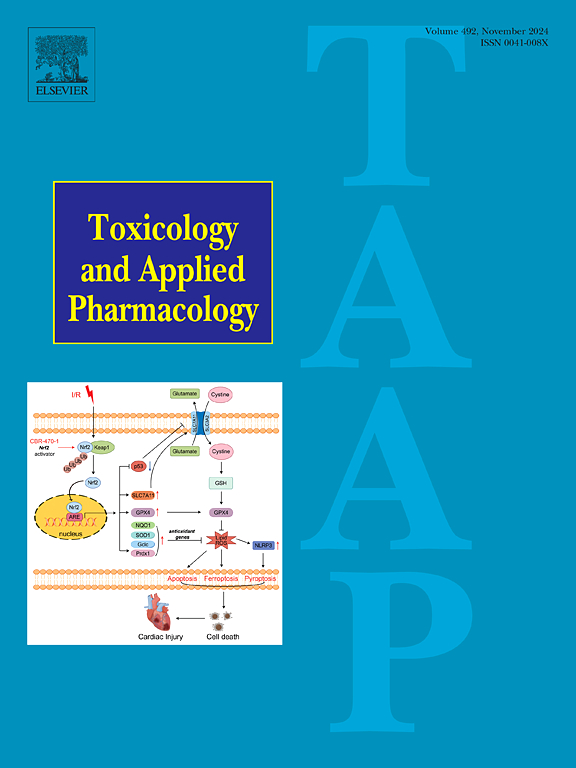Mechanistic and metabolic exploration of neohesperidin against lung cancer cell lines through ROS-mediated mitochondrial apoptosis: An in-silico and in-vitro approach
IF 3.3
3区 医学
Q2 PHARMACOLOGY & PHARMACY
引用次数: 0
Abstract
Lung cancer is a significant contributor to global mortality rates in the human population. However, the results of current treatment options are still unsatisfactory. Thus, the study explores low-toxic natural substances that release caspases and trigger apoptosis. Neohesperidin (NHP), a flavonoid, has anticancer efficacy although its molecular mechanism is unknown. In the current work, through in-silico and in-vitro screening, we discovered that NHP significantly reduces the expression of x-linked inhibitor of apoptosis protein (xIAP) and ATP on its administration, leading to apoptosis in human and mice lung (A549 and LLC-1) cancerous cells. Furthermore, NHP promoted the production of second-mitochondria-derived-activator-of-caspase (SMAC) and triggers mitochondrial dysfunction which also promotes apoptosis (51.1 %) as well as necrosis (25.8 %). This mechanism is regulated by mitochondria-mediated (Bax and Bcl-2) caspases-dependent apoptotic and ROS mediated pathway which increases SMAC expression by 21.2 % along with lowering the xIAP level (by 36.5 %). Moreover, network pharmacology was utilized to delineate the interactions of the compounds within biological networks, emphasizing their potential to target multiple pathways. In addition, we investigated the alterations in metabolites within A549 cells caused by NHP using liquid-chromatography-high-resolution-mass-spectrometry (LC-HRMS)-based metabolomics. The results revealed perturbations in metabolomes that are involved in multiple pathways. Therefore, this study indicates that NHP is a potential therapeutic agent to mitigate and control the proliferation of lung cancer and also regulates the energy metabolism.
新橙皮苷通过ros介导的线粒体凋亡对抗肺癌细胞系的机制和代谢探索:一种计算机和体外方法
肺癌是造成全球人口死亡率的一个重要因素。然而,目前的治疗方案效果仍不理想。因此,这项研究探索了能释放caspases并引发细胞凋亡的低毒天然物质。黄酮类化合物新橙皮甙(Neohesperidin,NHP)具有抗癌功效,但其分子机制尚不清楚。在本次研究中,通过体内和体外筛选,我们发现新橙皮甙(NHP)在服用后能显著降低 x 连环凋亡抑制蛋白(xIAP)和 ATP 的表达,从而导致人和小鼠肺癌细胞(A549 和 LLC-1)凋亡。此外,NHP 还能促进线粒体第二激活因子(SMAC)的产生,并引发线粒体功能障碍,从而促进细胞凋亡(51.1%)和坏死(25.8%)。这一机制受线粒体介导的(Bax 和 Bcl-2)依赖性 Caspases 的凋亡和 ROS 介导途径的调节,它使 SMAC 的表达增加了 21.2%,同时降低了 xIAP 的水平(36.5%)。此外,我们还利用网络药理学来描述化合物在生物网络中的相互作用,强调它们靶向多种途径的潜力。此外,我们还利用基于液相色谱-高分辨质谱联用技术(LC-HRMS)的代谢组学研究了 NHP 引起的 A549 细胞内代谢物的变化。结果显示,代谢组的扰动涉及多种途径。因此,这项研究表明,NHP 是一种潜在的治疗药物,可减轻和控制肺癌的扩散,还能调节能量代谢。
本文章由计算机程序翻译,如有差异,请以英文原文为准。
求助全文
约1分钟内获得全文
求助全文
来源期刊
CiteScore
6.80
自引率
2.60%
发文量
309
审稿时长
32 days
期刊介绍:
Toxicology and Applied Pharmacology publishes original scientific research of relevance to animals or humans pertaining to the action of chemicals, drugs, or chemically-defined natural products.
Regular articles address mechanistic approaches to physiological, pharmacologic, biochemical, cellular, or molecular understanding of toxicologic/pathologic lesions and to methods used to describe these responses. Safety Science articles address outstanding state-of-the-art preclinical and human translational characterization of drug and chemical safety employing cutting-edge science. Highly significant Regulatory Safety Science articles will also be considered in this category. Papers concerned with alternatives to the use of experimental animals are encouraged.
Short articles report on high impact studies of broad interest to readers of TAAP that would benefit from rapid publication. These articles should contain no more than a combined total of four figures and tables. Authors should include in their cover letter the justification for consideration of their manuscript as a short article.

 求助内容:
求助内容: 应助结果提醒方式:
应助结果提醒方式:


